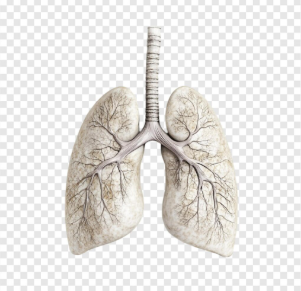
Improving Quality of Life for Patients With COPD
COPD, or chronic obstructive pulmonary disease, is a common lung disease that affects millions of people around the world. This condition narrows the airways, reducing lung function and causing symptoms such as shortness of breath, chest tightness, frequent fatigue, and increased risk of lung infections. According to the National Library of Medicine, COPD has been studied for around 200 years. And although physicians have been researching and treating the condition for this long, the disease can’t be cured, as the damage it inflicts on the lungs is permanent.
Nevertheless, there are practical measures and supportive strategies to help COPD patients maintain comfort and daily functioning. These quality-of-life improvements focus on easing symptoms and promoting independence. Here are some ways families and caregivers can support and care for people living with COPD.
Stay up to Date with Medication and Health Management
Proper medication management is crucial for controlling COPD symptoms. It ensures that the lungs receive consistent treatment and prevents flare-ups that can make breathing difficult. However, not all COPD patients can manage their medications independently. This is where the guidance and support of families and caregivers can be invaluable.
Loved ones can assist with daily medication routines by keeping track of their patient’s prescriptions and ensuring medications are taken on schedule. This prevents missed dosages and reduces the risk of symptoms worsening. Inhalers, pills, and other treatments should also be organized in a way that’s easy to access and understand so that patients feel confident in using them correctly. For patients who may rely on a nebulizer kit for daily treatment, caregivers can help maintain it properly, including cleaning and replacing the parts as needed.
In addition, regular monitoring of symptoms can prevent complications. Caregivers should watch out for increased coughing, wheezing, or sudden shortness of breath, and report these changes promptly to healthcare providers. Lastly, scheduling and attending routine checkups ensures that medications and treatment plans remain effective. With a structured medication plan and attentive care, those with COPD can maintain stability and improve their daily comfort.
Ensure a Safe and Clean Home Environment
A home that supports lung health can make daily life much easier. Environments that are dusty, poorly ventilated, or filled with strong odors can trigger coughing and shortness of breath. That’s why families and caregivers should clean and maintain the home regularly to reduce irritants and allergens.
Proper ventilation also helps prevent the buildup of irritants. Simple measures, such as opening windows (when outdoor air quality is good) or using exhaust fans while cooking, can make a noticeable difference. Additionally, keeping the indoor air quality free from allergens can minimize respiratory discomfort. Air purifiers with HEPA filters can greatly reduce dust, pollen, and other airborne particles.
Meanwhile, removing clutter and obstacles from walkways reduces the risk of falls, which can be a common accident for those who tire easily. What’s more, furniture and living arrangements should prioritize comfort and accessibility, with frequently used items placed within easy reach. Even small adjustments, such as rearranging storage shelves or adding non-slip mats, can significantly reduce the effort COPD patients need to complete routine activities.
Encourage Gentle Physical Activity
Regular exercise can improve lung capacity and reduce fatigue for COPD patients. Even short walks around the house or light stretching exercises can help maintain strength and flexibility. Caregivers can assist by setting up a safe space for activity and encouraging consistent routines without pushing the patient beyond their limits. Families can also join patients during their exercise to provide motivation and reassurance. When patients see their loved ones participating, it makes the activity more enjoyable and less intimidating. It’s important to keep activity sessions brief yet frequent. This approach allows patients to stay active without overexertion, making it more beneficial than longer, strenuous exercises.
Promote Healthy Lifestyle Habits
A balanced lifestyle can complement medical treatments and improve overall well-being. Nutritious meals that include fruits, vegetables, and protein can maintain energy levels and support lung health. For patients who experience breathlessness while eating, smaller, more frequent meals are recommended. This makes mealtimes more manageable and reduces the effort needed to breathe while eating.
Proper hydration is equally important. Drinking enough water helps thin mucus, making it easier for the body to clear the airways. Patients should avoid excessive caffeine or alcohol, as these can cause dehydration and additional strain on the respiratory system. Lastly, smoking cessation is critical, as this vice directly worsens lung function and accelerates disease progression. Caregivers can offer their support through encouragement and by providing resources that help patients quit and maintain a smoke-free lifestyle.
Provide Strong Emotional and Social Support
COPD can be physically exhausting and emotionally challenging, resulting in many patients feeling isolated, anxious, or frustrated by their limitations. In these circumstances, families and caregivers play a crucial role in providing reassurance and a sense of stability. Their consistent presence and attention can significantly boost confidence and promote emotional well-being. Simple daily routines, such as regular check-ins, can offer comfort and a sense of security. Acknowledging their feelings can also help reduce stress and improve overall well-being.
Social interaction is also important, since many COPD patients tend to withdraw due to fatigue or fear of breathlessness. That’s why caregivers should actively facilitate connections, such as visits with friends or family or arranging phone or video calls, so that patients continue to feel valued. These supportive acts encourage patients to engage socially and maintain a stronger sense of emotional resilience.
COPD can place a significant physical and emotional strain on patients. However, with consistent care and understanding from loved ones, patients can experience greater comfort and maintain independence in their daily lives. Through simple yet thoughtful actions and support, families and caregivers can make daily challenges more manageable, improving COPD patients’ quality of life.











